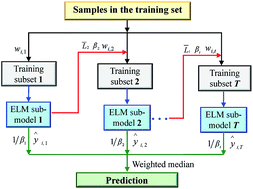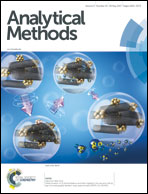A boosting extreme learning machine for near-infrared spectral quantitative analysis of diesel fuel and edible blend oil samples
Abstract
Extreme learning machines (ELMs) have drawn increasing attention due to their characteristics of simple structure, high learning speed and excellent performance. However, a single ELM tends to low predictive accuracy and instability in dealing with quantitative analysis of complex samples. To further improve the predictive accuracy and stability of ELMs, a new quantitative model, called the boosting ELM is proposed. In this approach, a large number of ELM sub-models are sequentially built by selecting a certain number of samples from the original training set according to the distribution of the sampling weights, and then their predictions are aggregated using the weighted median. The activation function and the number of hidden nodes of ELM sub-models are determined simultaneously by the ratio of mean value and standard deviation of correlation coefficients (MSR). The performance of the proposed method is tested with diesel fuel and blended edible oil samples. Compared with partial least squares (PLS) and ELMs, our results demonstrate that the boosting ELM is an efficient ensemble model and has obvious superiorities in predictive accuracy and stability. Therefore, the proposed method may be an alternative for near-infrared (NIR) spectral quantitative analysis of complex samples.



 Please wait while we load your content...
Please wait while we load your content...